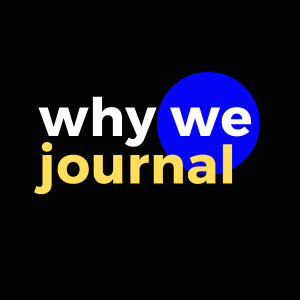How To Journal [infographic]
Sometimes, we all need a little guidance. New things can be exciting and scary and confusing. Even journaling. If you tend to make excuses, put up imaginary hurdles or tell yourself that journaling is just too big of a thing, this guide is for you. Keep reading to learn: how to journal.
![How To Journal [infographic]](https://images.unsplash.com/photo-1633210155534-e43f00c1d627?crop=entropy&cs=tinysrgb&fit=max&fm=jpg&ixid=M3wxMTc3M3wwfDF8c2VhcmNofDR8fGpvdXJuYWxpbmd8ZW58MHx8fHwxNzAwMDgyMzMwfDA&ixlib=rb-4.0.3&q=80&w=1200)
Hello Fellow Journalers!🖊️📖
Sometimes, we all need a little guidance. New things can be exciting and scary and confusing. Even journaling. [WARNING: extra long blog post]
If you make excuses, put up imaginary hurdles or tell yourself that a new thing (like journaling) is just too big of a thing, this guide is for you. While it’s constructed for journaling, really, you can use it for any new habit or hobby you wish to implement.
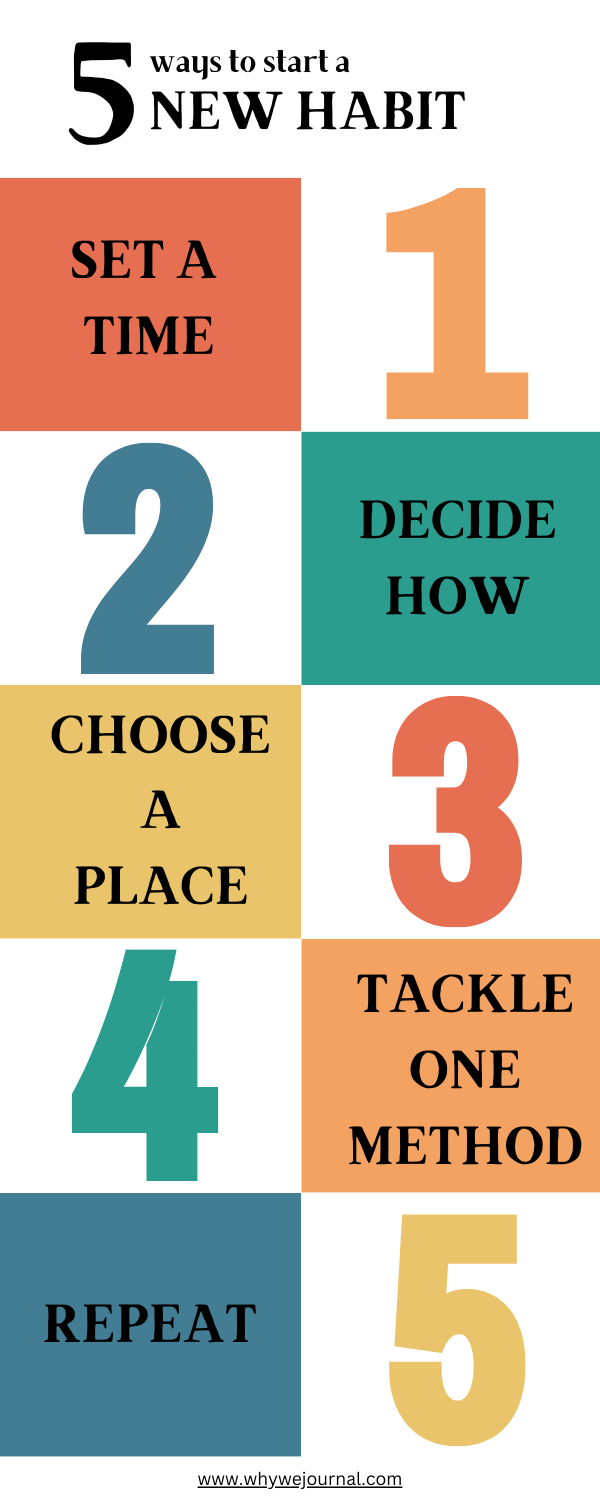
1️⃣Set Your Time⏰
Being clear and specific gives you a one-up on meeting your goals (ahem, journaling). By setting a specific time, you’re automatically cueing your brain to complete the intended goal. Bonus: you’re reducing decision fatigue by planning ahead and creating a back door for accountability. (1,2)
Hack #1: Anchor the new habit to an existing one. Perhaps you love coffee in the morning. Set your journaling time with your coffee! Or maybe you like an evening shower. How about right after? Do you like taking lunch solo?
Hack#2: Create anticipation. I once heard from a journaler that she would set up her sheets prior to writing in them. I thought this was brilliant. She took time to outline the blank page, maybe do some collage or pop of color. She did things that were fun and attractive to her. Tailor the experience of what you would enjoy.
2️⃣Decide How✏️💻🗣️📹🎨
Handwriting✏️
Handwriting is by far the most recognizable way people journal. There are so many benefits to this. Research proves handwriting improves the learning process by the physical act of using your hands and fingers to write the letters, so your sensory pathways are engaged while thinking out what you are writing. This leads to the notion of cognitive flexibility. (3,4)
As my husband says, those are 20 dollar words. 😂Cognitive flexibility is the idea that when you are on one task, switching to another is... easy. Some of you are like, of course, this is easy. I do one thing and I move on to the other. I am here to inform you not everyone on this planet actually has this experience. Ever hear a friend or a co-worker say, “I had prepared myself for this meeting that just canceled or thing that isn’t happening, now what do I do?” Think of that.
So how does journaling help with this? When you are deep in thought, and choosing what to write, there is a process in your brain that goes from thought to written word. This switching back-and-forth process gets exercised more and more as you journal, creating a task that strengthens your cognitive flexibility. Pro tip: cursive is a complex task. By writing in cursive, you are actually practicing a great cognitive exercise that increases mental agility.
Another benefit of handwriting? You’re practicing your handwriting! 😉 (You may encounter cheese🧀 in some of my blog posts, you have been post-warned 😝). A lot of this research comes from child development and the intuitive idea that when you practice a thing, you get better at that thing. (5,6) Not everyone has had the same educational playing field and in a digital age, there’s less interest in retaining handwriting skills and increased preference for technological skills.
Typing💻
Let’s talk about typing! Digital journals are increasingly popular, from a notes app on the smartphone, word processors, specialized software that’s password protected, and even software that you didn’t think you could use for digital journaling (think Canva). But typing is so much more than a way to avoid hand cramps from handwriting.
You may want to type when your typing is just better than your handwriting. Increased legibility can be a positive reinforcement tool to encourage a new journaler to keep going. By seeing the result, legibly, we’re assuming that this will create a positive feedback loop in your brain to keep the baby-habit in forward motion.(7)
It can also be a lot faster to type, which leads to increased efficiency. A handy by product of that increased efficiency? Increased productivity. (8) That also creates a positive reinforcement experience in that brain of yours. Imagine: you’ve pumped out 3,000 words in under an hour (you’re amazing!) and between spellcheck and those flying-fingers, your personal memoir is chugging along for your descendants to read decades from now. Doesn’t that feel satisfying? A productive use of your time?
This feeling is important. I know I need a personal win from time to time to continue doing hard or new things. Even if the win is small, that visual translates into a reward for the hard work I put in. Another great example is sports. When an athlete can objectively see their performance, measure the output, and register progress, that is a small step towards the intended goal. This can build self-efficacy, the belief one can attain the intended goal. The athlete can observe the improvement, measure it and register it, creating a positive feedback loop. This repeated system translates into a belief that propels the athlete forward and research shows these athletes are more likely to attain their intended goals. (9, 10)
Here’s my last argument for typing: physical limitations (but this will come up again below). For those that have physical limitations that make handwriting difficult for long periods of time or at all, typing is an alternative.
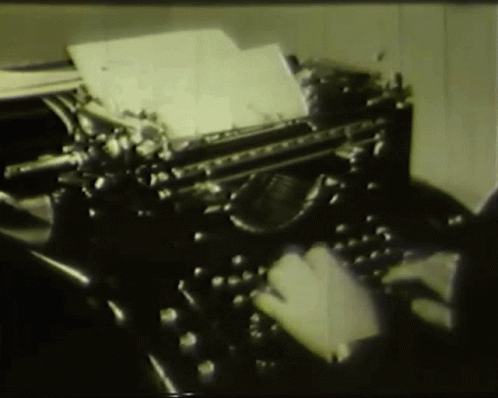
Dictation🗣️
Dictation is an under-used tool that packs some powerful benefits. Handwriting or typing for long periods of time can equal carpal tunnel city. Dictation can reduce the physical strain associated with overuse of one’s fingers, hands, and wrists. While some may have physical limitations with their hands, others may take it as a more preventative approach. (11) Or do you have a learning disability, and writing and typing is a hurdle that discourages journaling? Dictation allows the journaler to move forward with a strategic tool that provides accessibility. (12)
Are you a quick-thinker? Sometimes our thoughts outpace our fingers, and speaking into a dictation device can capture ideas that come across our brain like a toddler finally getting into the no-no cabinet. This type of experience can be spontaneous (again, toddlers, no-no cabinets). Having our recorded, unfiltered, expression can yield depth to the journal. (13)
Do you like to multi-task? Dictation can be a hands-free approach to journaling. While you narrate your journal entry, a different task could be completed. (Folding laundry, anyone🤔?) A mechanical, rote task, can be completed with little frontal lobe involvement, leaving it free to focus on dictation!
Dictation is also increasingly accessible. More phones offer dictation capabilities within existing applications. You can convert these dictations into an alternate form, such as a word document or pdf. Dictation devices are also more affordable and while associated software can still be $100+, this is a vast improvement than what it used to be ten or twenty years ago.
DETOUR: There's also a fun thing called Voice Typing.
Video📹
Often overlooked, the video journal. When thinking of a video journal, what comes to my mind are reality tv shows when cast members have the camera or even vlogs. But these can be video messages from special occasion to everyday use. Maybe you always want your family to know you love them, and video recording your devotion is a priceless gift. Or it’s easier for you to talk to the camera about the pepperoni pizza you ate rather than writing it down.
By video recording yourself when talking, recounting a memory or narrating your thoughts, the viewer has unique benefits. They can see your face.
Yes, by implication, journaling is often very private. But by seeing your face, the viewer can register facial expressions along with the precious and preserved memories. This enhancement to the video journal offers increased emotional connection from the viewer. The video journal is shareable, and provides a unique, emotional experience that would not be the same as reading a journal. The viewer can hear your voice, see your face and facial expressions, and feel like one half of a shared experience, even if it wasn’t real-time for both of you. (14,15)
Video journaling is also a tool for supercharging creativity. The opportunity to engage with visual media makes one’s journaling experience even more impactful, whether the viewer is the journaler themselves or someone else. There’s even a cool study that notes video journals in a creative writing program can encourage creativity while promoting reflection. (16)
DETOUR: Go a bit deeper on video journals here ⬇️
Art🎨
There is a whole corner office of the internet dedicated to art journals. Head over to Pinterest, and you’ll quickly be initiated into the art-journal-fan-club. Art journaling is amazing. Pick any medium, any type of journal, and let your creativity soar unhindered. And studies go nuts over the potential benefits.
Art journaling doesn’t just let you learn color theory, but that’s super cool, too. It allows the journaler to process some real, deep, traumatic shit, feeling the feelings and, as a by-product, processing them in a necessary, therapeutic way that allows the journaler relief through symptom reduction. Whew! (17)
Want to chill out? Art journaling is great for that! While engaging your brain in creative thinking, you’re are also engaging your body in rhythmic movements that ultimately trigger many body responses that help with stress reduction. Let’s go over a well-known scenario: the baby is crying, stressed out, and doesn’t want to sleep. Well-known solution: rocking the baby. Rocking the crying baby provides a rhythm the baby can feel and latch onto. Rhythmic movements can trigger some desperately needed endorphins. Endorphins can help boost mcoood and pain-relief. Mood improved= less crying, more relaxed, baby falls asleep (in a perfect world). (18)
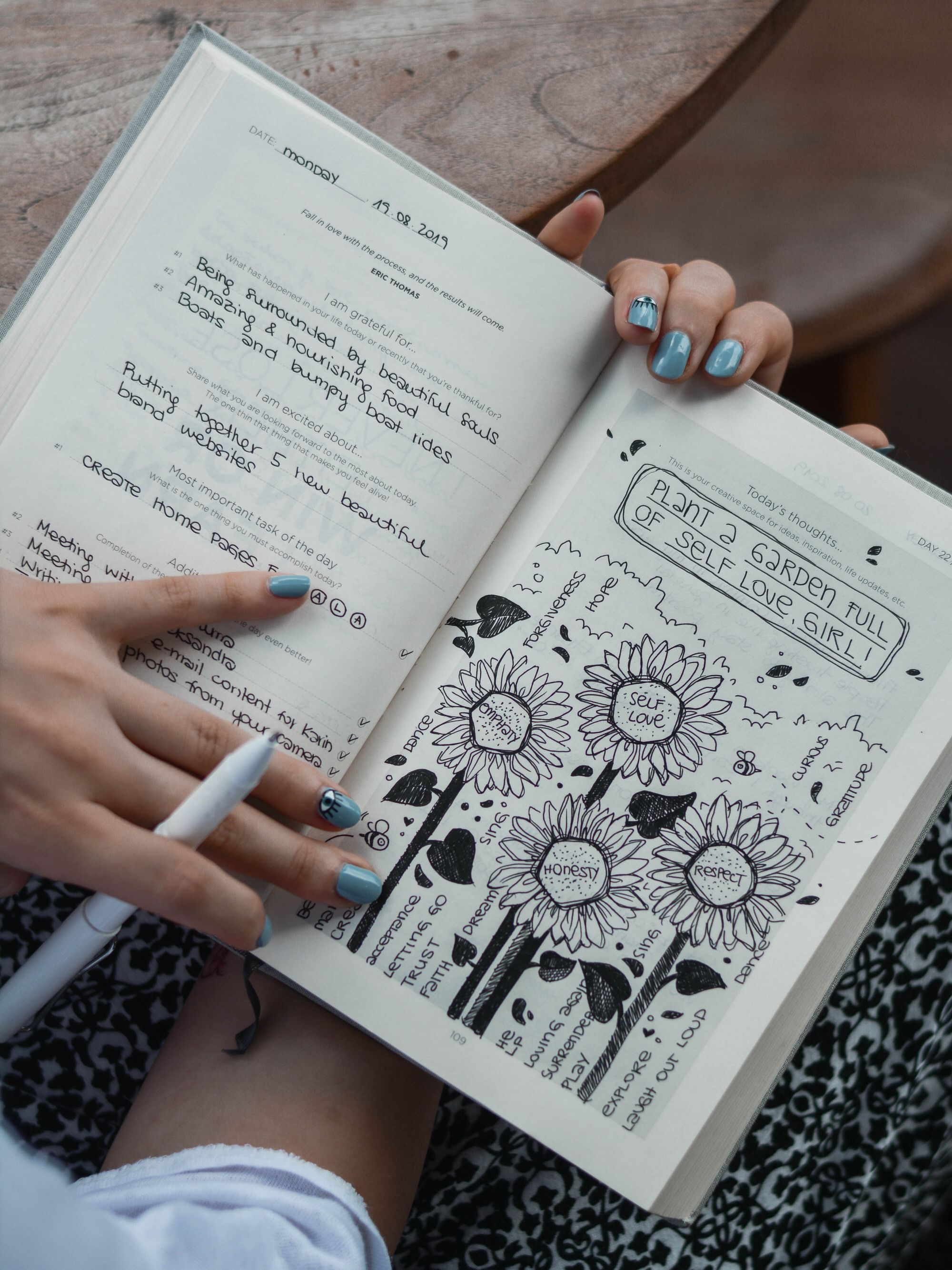
Want to master that mindfulness that seems to be all over the place? Art journaling is amazing for that. Mindfulness is about bringing yourself into the present moment and improving focus. With art journaling, there is a sensory experience that places the journaler in the present because of the creation of art. You are actively choosing the color, the line, the thing you are creating on the page.
One last thought on art journals: sometimes words just don't convey what's inside.
3️⃣Choose a place🏠
Choosing a place is important. Part of it is knowing yourself and your needs.
Are you easily distracted? Do you need absolute silence? Do you require privacy in your home or the privacy of anonymity in a public setting? What about fresh air? Does the sun burn your skin like the vampire you are and you need a coffin in your blackout curtained room? 🧛🦇
But really, it’s important to self-acknowledge the best setting for you to journal. If you live with other people and are likely to be interrupted, is it better to do it when they are out of the house? When you are out of the house? Is it better to create a ‘silent space’ where others know not to disturb you? Does the ambience of background noise help you mentally focus?
Here is a list of places to look over. Do any below resonant with you as a potential spot?
Home-inside
bedroom
office
garage
kitchen
living room
'silent space' (a place that you verbalized as a designated spot to be left alone)
Home-outside
front porch
back porch
back yard
side of house
shed (ideally a shed conversion set-up)
Not at Home-inside
library
bookstore
mall communal area
university campus
local college library
recreation center
senior center
community working space
restaurant
coffee shop
Not at Home-outside
city park
state/federal land
outdoor seating (think restaurant, coffee shop)
by a lake
in a forest
hiking trail
walking path (find benches)
a field
botanical gardens
your commute (train, subway, bus, carpool)
4️⃣Tackle One Method📖💻🗣️
What sounds the least scary? What is the most interesting? Make a list, see what crosses over in each list. This is your first journaling method.
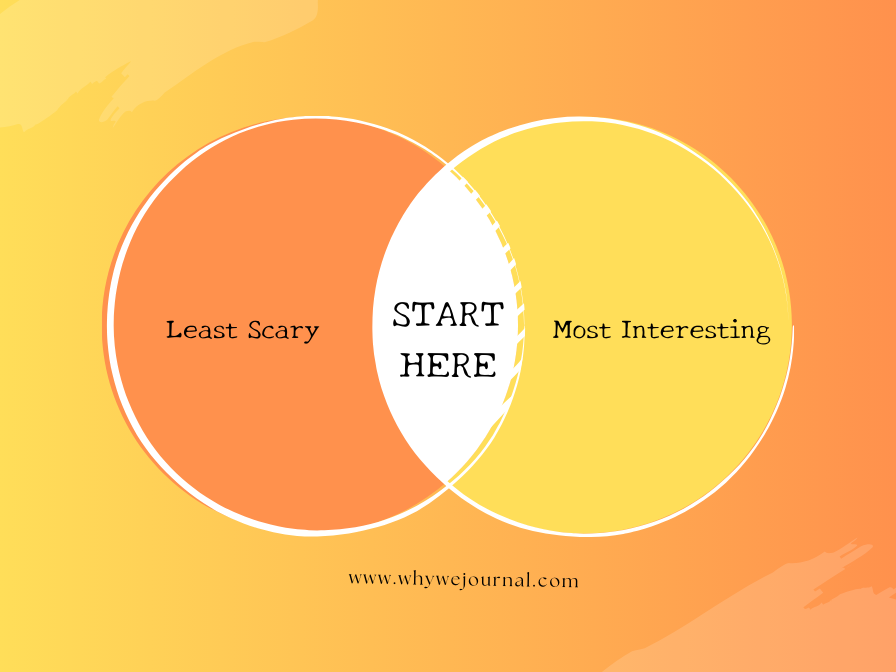
Here are some key points to ponder while choosing your first journaling method:
- How much time do you really have to journal?
- Are you wishing to write about your day, your thoughts?
- Do you wish to achieve a particular goal?
- Is this for yourself or a gift for others?
- Are you looking for a creative outlet?
- Are you searching for a tool to reign in chaos?
- Is this journal a communication between you and your faith?
5️⃣Repeat🔁
At this point, it seems simple. Repeat.

But so many of us don’t. We do a little here and there. We hear how long it takes to form a new habit. Maybe you heard the number 21 days or even 66 days. You try to get past those marks and still it doesn’t stick. Why?
Well, it really takes anywhere from 18 to 254 days to form a new habit. (19)
That’s difficult.
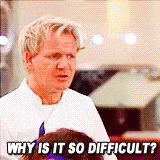
We’re going to go step by step into why it’s so hard to form a new habit, even with repetition.
WHY IS REPETITION HARD?
Your Brain
It likes familiarity and the habits you already established, and the behavior patterns that are currently ingrained in you. (20, 21, 22) And while your brain is plastic, it’s not that plastic. (Brain plasticity is the idea that you can form new pathways and new learn things) It takes time to form new routines and keep new information. This is a good thing. It means that you are an active part of deciphering the information presented, and discarding what does not seem right or does not work. For instance, if someone told you the sky was green, would you immediately take that as new information, believe it, and keep it? No. Because you know the sky is blue, or that funky gray color when a dreadful storm is coming. (24)
So repetition is necessary to overcome old behavior patterns and to capitalize on plasticity. It’s also super tiring.
Your Environment
Journaling is a solo hobby. Rarely is there an accountability partner or the peer pressure to show up for someone else. So with the idea of social support, rarely can you find it. This often leads to a lack of opportunity to use repetition with other people, like you would with group-based hobbies, such as book clubs.
But with the general idea of social support and one’s health, research proves that better outcomes exist when we have loving individuals that encourage us, help us, and want us to grow and keep growing. (25, 26). Let’s head over to the realm of dialectal behavioral therapy (DBT). It’s an outstanding technique that is used for some heavy-duty psychiatric disorders. A big focus is negotiating relationships. There’s a ton more to DBT, but let’s not get lost in that super cool tangent. (27)
There’s an acronym used called DEARMAN. It’s breaking down the process and experience of asking for what you need.
Describe the situation: I have hurdles x, y, z in place that prevent me from journaling
Express my feelings: I feel x, y, z
Assert/Ask: I want x, y, z please
Reinforce the positive: I will benefit from this by experiencing/gaining/etc
Mindful aka maintain the position in the verbal exchange
Appear positive, use a confident, sincere voice, make eye contact
Negotiate fairly, don’t be a doormat, and don’t be the bus that runs other people over (28)
If you feel like part of your hurdle time and space, consider using the DBT skill above to help negotiate with your loved ones.
Another overlooked component of repetition? Not stacking rewards.
Yes, in my grandiose opinion, journaling itself is the reward. But sometimes giving yourself a little extra helps with some of that oh so nice positive reinforcement. Remember, a long time ago, towards the beginning of this blog post eons ago, we mentioned positive reinforcement? (7, 8, 9, 10) What ways can you concoct for rewarding yourself? Can you stack that enjoyment, your favorite meal, drink or snack with journaling? Maybe your favorite music? Do something for yourself with the journaling, and your brain will register more positivity that helps reinforce the feedback loop.
Your Personality
It isn’t just motivation that keeps us going forward when forming a new habit, it’s persistence. It’s deciding to be relentless even when we feel unmotivated, discouraged or downright tired. In this situation, repetition just sucks.
How do you fare when making the mental decision to endure? (29)
― Angela Duckworth, Grit: The Power of Passion and Perseverance
Here are my personal tips for keeping motivated when the grit seems to wear away:
#1: What’s your why? That deep reason for you deciding to take on the new thing, and in this case, journaling.
#2: Put that why somewhere you can see it. On your wall, on your mirror, on the background of your phone. Make it a visual reminder every day, impossible for you to ignore.
While you’re at that, take some time to acknowledge the temptations that trip you up, often paired with existing habits. An example of this would be, you feel bored in the evening and often will watch TV. Your boredom is the trigger, and the temptation paired with this is TV. How will you combat this temptation? Will you decide to be in a different room than the TV in the evening? Will you deliberately expose yourself to the TV but try to choose your new habit? (30)

Another killer of repetition is unrealistic expectations. You were chugging along and thought, “Meh, I should have this down by next week! No worries!” or “This is not that hard!” When the road gets harder when not feeling like you’ve achieved what you were going to do, now you’re discouraged, and why should you continue? You expected different.
By failing to break down new tasks or goals into smaller, actionable, achievable steps, there’s a higher likelihood of failure. When acknowledging the mountain is a mountain rather than a molehill, you’re ahead of the game. (31, 32)
Your Health
Finally, with forming new habits, repetition is also built upon a framework of an individual capable of repetition. If you’re constantly sleep-deprived, stressed or suffering, it’s hard to find the mental and physical wherewithal to take on a new hobby, like journaling. It can be good for you, but if your plate is too full, it’s just an added stressor.
Take care of you first.
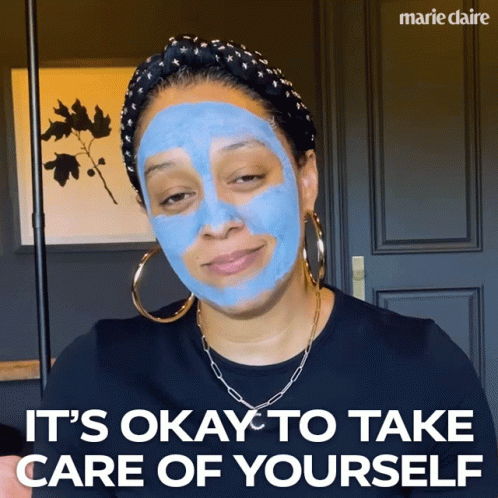
To recap: repetition is great but hard! Account for your brain, environment, personality, mindset, and health. But while there are many hidden roadblocks, keep your eyes focused on repetitions benefits.
Repetition can:
Overcome
It’s time for an exercise. Think of a pattern you automatically do without intentional thought. A good example would be the morning commute. Repeatedly, having the same movements and experiences translates into automaticity. There are automatic habits you may have that in order to replace a habit, you would have to use repetition until you overcome the ingrained default habit. For instance, you are taking an alternative route to work, and you may make a turn or two that was on the original route that you drove unthinkingly for years. Your brain has a cue for the commute habit: go to work. You are actively overriding the unthinking habit of the old commute route. You make some mistakes (by accidentally starting with the old commute route) but eventually repeated practice at the alternative route helps overcome the ingrained habit. (33, 34, 35)
Am I boring you yet?
Enhance
Repetition can bring enhancement to the learning of new habits. As you tackle your chosen journaling method and goal, new neural connections are being created. Each journaling session enhances these connections.
Let’s tackle the therapy journal. Maybe the journal is an adjunct to therapy or used without the guide of a therapist. (Ahem, unless it’s not clear, therapy is awesome!) Let’s take a very specific example of cognitive-behavioral therapy, where one’s negative thinking is being challenged and changed. Repetition cements positive thinking patterns by enhancing the learning process. (37)
Skill-building
Maybe you’re thinking a journal can help achieve some measurable goals. You are absolutely correct. Remember how repetition can lead to automaticity? As you gain more skills unthinking, also known as unconscious competence, this can lead to more efficiency at a particular skill.
Health journals are popular and also require real-world skill learning. One goal is to drink x amount of water in a day, and you write your daily tally. Maybe you’re trying to pair drinking water with another habit, such as sitting down for meals. At first you have to think about it and decide rather than going to an alternate beverage (coffee! ☕) and then with time, it becomes automatic. (38, 39)
By writing and reflecting on how you performed daily towards a specific goal, such as drinking water, you are creating a feedback process. This process of feedback is important, because now you are recognizing a mistake in your repetition and instead of repeating the mistake repeatedly creating an unwanted neural connection (coffee, we miss you! ☕), you are actively correcting yourself. Such feedback sets you up for success with future repetitions. (40)
Be Active and Space it Out
Everyone has a preferred learning style, and journaling can be an active learning style. An example would be you’ve chosen to incorporate more positivity into your daily life and started a gratitude journal. It’s hard to do this every day, so you’ve settled on three times a week. Two things:
- You are actively thinking and writing about specific positive experiences.
- You are repeating on a timed and spaced basis.
By choosing to think about something positive in your life, you are in a back-door way, testing yourself and forcing yourself to elaborate on experiences you’ve already had. By asking yourself, what am I grateful for? You are problem-solving for your goal of consciously becoming more positive and grateful for what you have in your life.
And by using spaced repetition with your task, you are more likely to form long-term memory retention. Remember cramming for that test in school but forgetting the information the next week? It’s kind of like that. (41, 42, 43)
Repetition = Cognitive Flexibility
Ok, that may be too strong a statement to make, but repetition definitely strengthens cognitive flexibility. (remember, all the way at the beginning of this blog post when we talked about 20 dollar words?)

Maybe that daily to-do list is a chaotic mess that makes you feel you got ran over by a tornado on groundhog day. Bullet journaling is coming for you this new year and every day, you’re listing your shit and crossing off tasks as done. With each list made and cross through, you are mentally preparing yourself to switch over to the next task, increasing your capability of cognitive flexibility. After repeating this day after day, you’ll be ready for sodoku championships.
Review
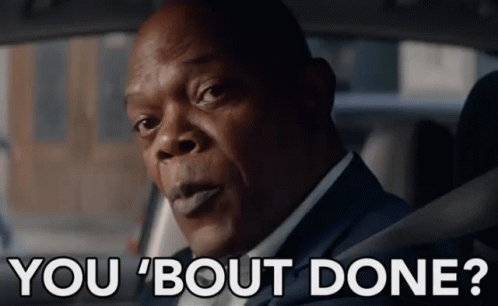
Yes. We are almost on the other side of this epic journey that could have been simply summarized as below:
- Set your time of when you will journal
- Decide your best medium: writing, typing, dictation or video
- Choose your journaling hidey-hole or public space
- Tackle one journaling method to begin with
- Repeat
I want to express a heartfelt thank you to anyone who reads this entire thing. I do a monthly newsletter (here's a sneak peak) of journal prompts with blog updates. If this interests you, please subscribe! I also love knowing my readers enjoyed the posts, leave a comment or email me!
-A Very Enthusiastic Journaler
P.S. If you've made it this far, please consider signing up for the monthly 3-1-1 newsletter. Want a preview? Head here.
Stay connected with me on LinkedIn, Pinterest, and Amazon.
P.P.S. Are you a creator, blogger, writer, or just want to collaborate? Head here.

This one is way shorter! ⬇️
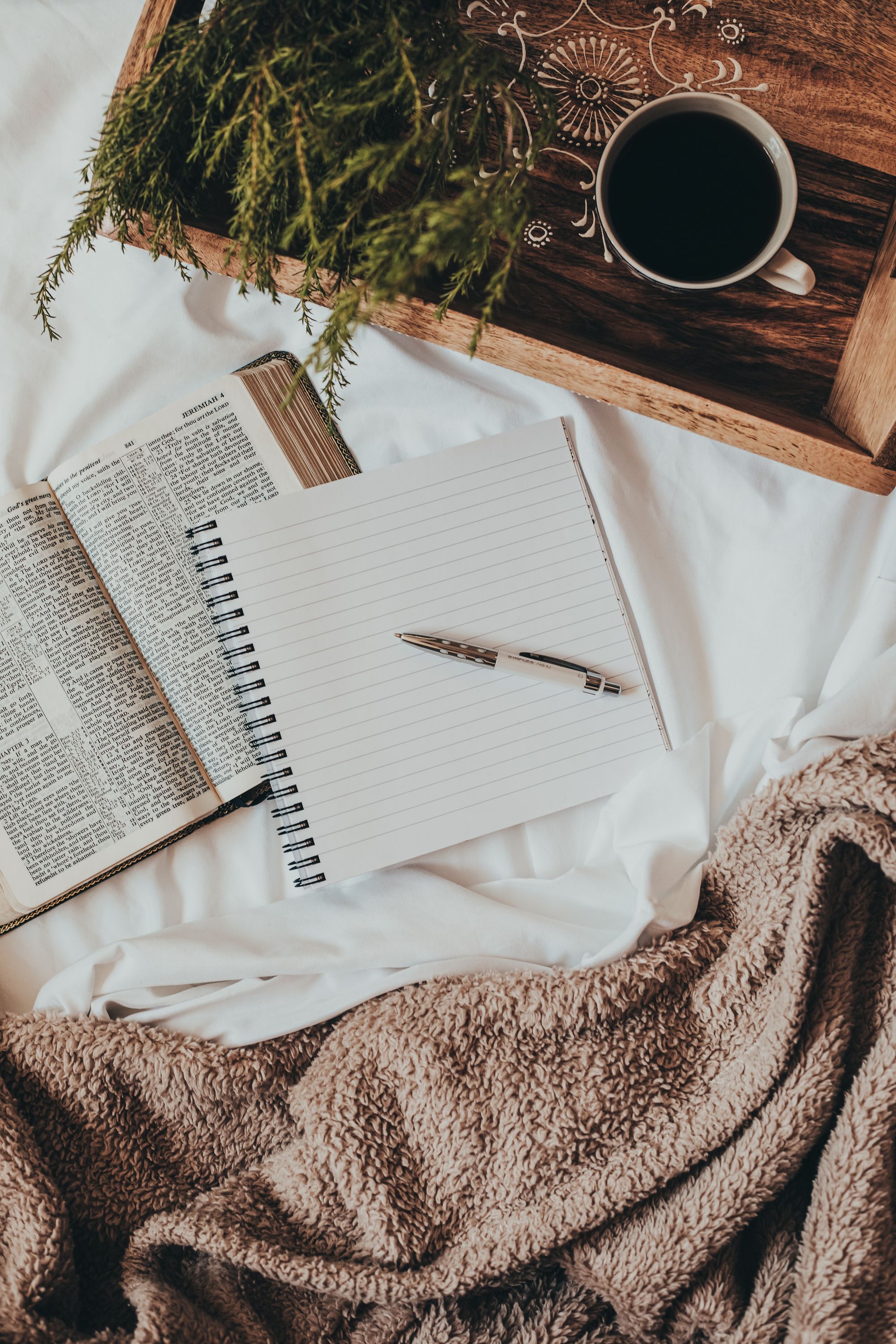
Citations
- Lee, N. (2019, April 11). 5 proven ways to set goals and achieve them. Medium. https://medium.com/swlh/5-proven-ways-to-set-goals-and-achieve-them-cf19016b3af1
- Heimbigner, J. R. (2019, December 28). How to set goals that you’ll actually achieve. Medium. https://medium.com/mind-cafe/how-to-set-goals-that-youll-actually-achieve-1d24358d3753
- Anguera, J. A., Bocz, T., & Jaeggi, S. M. (2011). A review of cognitive training effects on brain plasticity and transfer to learning and everyday skills. Progress in Neurobiology, 95(1), 120-136.
- Reuter, J., Schmiedek, A., Dichgans, J., & Jansen, A. (2012). Cognitive stimulation and brain plasticity: Comparison of three training programs. Neuroimage, 61(1), 218-228.
- Rohrer, D., & Pashler, H. (2010). Is it the repetition or the spacing? A test of the spacing effect in free recall. Journal of Experimental Psychology: Learning, Memory, and Cognition, 36(5), 934-947.
- Dunlosky, J., Rawson, K. A., & Thieu, M. K. (2013). Becoming a self-regulated learner: An overview of metacognition and study strategies. In APA Handbook of Educational Psychology: Volume 3: Learning and Motivation (pp. 243-271). Washington, DC: American Psychological Association.
- Prince, M. (2004). Does active learning work? A review of the research. Journal of Engineering Education, 93(3), 223-231.
- Hattie, J., & Timperley, H. (2007). The power of feedback. Review of Educational Research, 77(1), 81-111.
- Beilock, S. L., & Carr, T. H. (2005). On the recovery of motor skills: The role of practice specificity and context similarity. Journal of Experimental Psychology: Learning, Memory, and Cognition, 31(2), 313-324.
- Wikipedia Contributors. (2019, March 14). Four stages of competence. Wikipedia; Wikimedia Foundation. https://en.wikipedia.org/wiki/Four_stages_of_competence
- American Psychological Association. (2017). What Is Cognitive Behavioral Therapy? American Psychological Association. https://www.apa.org/ptsd-guideline/patients-and-families/cognitive-behavioral
- Rugg, M. D., & Cowan, N. (1997). An in-depth investigation of the effects of spacing and item repetition on word-fragment recognition. Journal of Experimental Psychology: Learning, Memory, and Cognition, 23(3), 525-547.
- Verplanken, B., & Wood, W. (2006). Dual-process theories of behavior: A review and a synthesis. Advances in Experimental Social Psychology, 38, 223-276.
- Automaticity. (2023, October 4). Wikipedia. https://en.wikipedia.org/wiki/Automaticity#:~:text=In%20the%20field%20of%20psychology
- Beilock, S. L., & Carr, T. H. (2005). On the recovery of motor skills: The role of practice specificity and context similarity. Journal of Experimental Psychology: Learning, Memory, and Cognition, 31(2), 313-324.
- Fogg, B J. "Tiny habits : the small changes that change everything." Boston : Houghton Mifflin Harcourt, 2019.
- Lock, D. (2005). The psychology of self-management. London: Sage.
- Eyal, N. (2014). Hooked: Build habit-forming products. New York: Penguin Random House.
- Lally, P., van den Berg, E., Potts, H. W., & Wardle, J. (2010). How long does it take to form a habit? A review of the literature. European Journal of Social Psychology, 40(2), 997-1009.
- Duckworth, A. (2016). Grit: The power of passion and perseverance. New York: Scribner.
- Linehan, M. (n.d.). DEAR MAN Skill. Dialectical Behavior Therapy (DBT) Tools. Retrieved November 20, 2023, from https://dbt.tools/interpersonal_effectiveness/dear-man.php#:~:text=The%20DEARMAN%20skill%20is%20intended
- Psychology Today. (2014). Dialectical Behavior Therapy | Psychology Today. Psychology Today. https://www.psychologytoday.com/us/therapy-types/dialectical-behavior-therapy
- Uchino, B. N. (2006). Social support and health outcomes: A review of the literature. Psychological Bulletin, 132(1), 25-57.
- Cohen, S. (2004). Social support and health. Handbook of Health Psychology, pp. 571-608.
- Merzenich, M. M., & Bauman, S. A. (2003). Cortical plasticity: Its role in learning, memory, and mental function. Annual Review of Neuroscience, 26, 311-335.
- Van Orden, G. C., & Sheeran, P. (2001). The role of self-regulatory processes in the formation of behavioral habits: An evaluation of three models. Psychological Review, 108(3), 548-573.
- Dijkstra, K. (1990). Motivation: The psychology of doing something because you want to. New York: Guilford Press.
- Verplanken, B., & Wood, W. (2006). Dual-process theories of behavior: A review and a synthesis. Advances in Experimental Social Psychology, 38, 223-276.
- Lally, P., Van Jaarsveld, C. H. M., Potts, H. W. W., & Sheeran, P. (2010). How are habits formed: Modelling habit formation in a 90-day experiment. Health Psychology, 29(6), 699-709.
- Von Karger, C. (2005). The effects of rhythmic movement on mood and stress. Applied Psychology in Health and Well-being, 1(1), 3-10.
- Kim, H., & Kim, J. (2016). The application of art journaling in promoting creativity and innovation in design education. International Journal of Art & Design Education, 35(3), 418-431.
- Malchiodi, C. A. (2007). Breaking free of the past: Overcoming trauma and loss with expressive arts therapies. Routledge.
- Cranton, P., & Graham, L. (2010). The use of video journaling in creative writing education. Teaching English in the Two-Year College, 38(1), 22-32.
- Pennebaker, J. W., & Francis, M. E. (2001). Open and expressive writing: How it works and how it can help. Journal of Personality and Social Psychology, 80(2), 158-171.
- Cohen, G. (2007). Reliving memories: The role of visual and auditory cues in autobiographical memory retrieval. Psychological Science, 18(9), 717-722.
- Newman, M., & Pennebaker, J. W. (2003). Using expressive writing to enhance meaning-making: A new approach to writing pedagogy. Journal of Educational Psychology, 95(2), 280-285.
- Rose, D. F., & Meyer, A. (2000). Dictation as a strategy for improving writing among students with learning disabilities. Journal of Learning Disabilities, 33(3), 205-211.
- Galvin, J., Adams, C. E., & McKelvey, J. F. (2016). The influence of typing speed on writing quality. Journal of Educational Computing Research, 54(2), 123-142.
- Bandura, A. (1997). Self-efficacy: The exercise of control. W. H. Freeman and Company.
- Carron, A. V., & Petitpas, A. (1990). Motivation in sport and exercise: A review of the literature. In J. L. Duda (Ed.), Handbook of sport and psychology (pp. 171-200). Wiley-Blackwell.
- Sellen, A., & Harper, R. (2002). The myth of the paperless office. MIT Press.
- McKelvey, J. F. (2006). Typing proficiency, writing quality, and revision behavior. Written Communication, 19(3), 374-395.
- Libertus, M. E., Piek, J., & Kellegriessen, R. H. (2010). The relation between fine motor skills and the learning of early literacy and numeracy skills in kindergarten. Journal of Applied Developmental Psychology, 31(6), 418-431.
- Anastasiou, E. C., & Mavilidi, I. F. (2012). The influence of handwriting practice on motor skills in early childhood. Early Childhood Education Journal, 41(3), 201-212.
- James, K. L., & Berninger, V. W. (2009). The influence of handwriting instruction on reading and spelling skills in young children. In M. Miles & J. A. Ramey (Eds.), Handbook on early childhood intervention (pp. 175-194). Cambridge University Press.
- Oppenheimer, J. M. (2010). The science behind smarter writing. Psychological Science, 21(11), 1567-1572.
